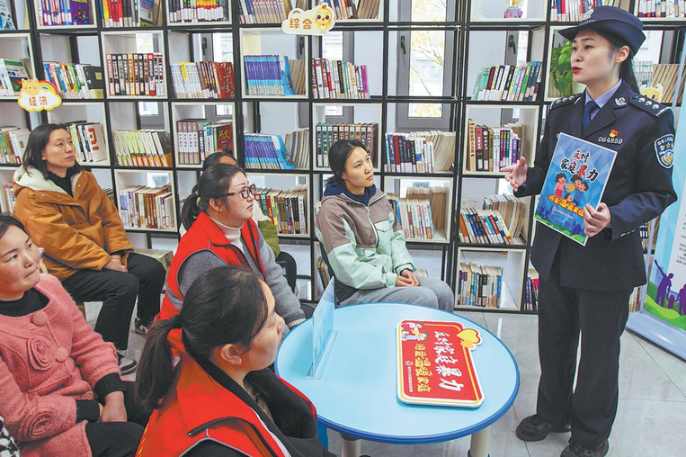China, UK researchers join hands on smart screen tech
By Angus Mcneice in London | China Daily | Updated: 2018-04-21 10:57
Users could soon be unrolling e-books and television screens, or receiving live traffic updates across the car windshields, thanks to a breakthrough by researchers in China and the United Kingdom.
Electrical engineers at Shandong University and the University of Manchester have developed an ultrafast oxide-based transistor that can be used in the circuitry and displays of flexible and transparent electronics.
Most electronic devices currently in use include silicon-based transistors, which are basic components of electronic circuits and displays. Although silicon-based circuitry is high-performing, it is rigid and opaque.
Oxide-based transistors - incorporating a mix of gallium, zinc and indium oxides - are both see-through and flexible, allowing for potential new innovations such as bendable electronic tablets and television screens.
Oxide-based transistors have been around for several years, although researchers have not been able to get them to operate at the speeds needed for high-performing electronics - until now.
A two-year project led by Song Aimin, professor of nanoelectronics at the University of Manchester, and supported by Song's former colleagues at Shandong University under a partnership, has produced an oxide transistor that can function at speeds of more than 1 gigahertz, meaning it can run more than one billion operations in a second.
That is fast enough for the transistors to support Wi-Fi, GPS, Bluetooth and other functions users have come to expect from everyday gadgets.
"Going beyond 1 gigahertz is a milestone," Song told China Daily. "A lot of modern technologies require transistors that work beyond 1 gigahertz. It's a benchmark speed."
The University of Manchester has now started a research and development project aimed at commercializing technologies that use the new transistors.
"If you look at the newest Apple watch, for example, it still has a rigid panel display, over a small area," Song said. "With oxide-based devices, potentially we can have a truly flexible, wearable watch, which has a display all around the wrist."
Song said the transistors can also be used in circuit boards over a large surface area, like a refrigerator door or car windscreen.
"It is ideal for optically transparent electronics, like smart glasses," Song said. "In the future we could see school children using flexible e-books, so they don't have to carry books around. They could write and draw on them, and the information could be transmitted wirelessly to a teacher in real time."
Song said that oxide semiconductors have only been studied in earnest since 2004; however, the commercialization of oxide-based gadgets could be just around the corner.
"It has taken silicon transistors 70 years to reach today's level of performance, where we have compact mobile phones with a lot of functionalities packed in," Song said. "Because of what we have learned through silicon technology, we won't need another 70 years. I would imagine we will see commercial applications for oxide-based technology in the next five years."
- Brexit to hit number of EU students heading to Oxford: Oxford vice chancellor
- Thousands of poor British families forced to live without heat, light or food
- Chinese firms invest to fill UK skills gap
- Catering to consumers' evolving preferences
- UK Queen wants her son to succeed her as head of the Commonwealth
























